What are the 3 stages of fitness testing?
What is the right fitness test for your sport?
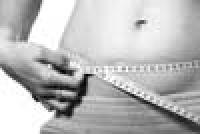 “I test athletes to justify my job” is one reason that fitness testing has become maligned and dreaded by coaches and athletes alike.
“I test athletes to justify my job” is one reason that fitness testing has become maligned and dreaded by coaches and athletes alike.
Others include “to look professional” or “to use my new bit of kit” or “to identify talent”.
Yesterday I ran a CPD workshop with a group of Strength and Conditioning Coaches and sports coaches. The theme was fitness testing and we covered these three areas:
- Choosing the right test.
- Testing accurately and reliably.
- Analysing and giving feedback.
The coaches were all prepared when they arrived thanks to a reading list, a video to watch and a written task on test selection. This meant that the workshop could be participatory, rather than passive.
When you get a group of minds together it is important to share and experience. Otherwise, you may as well record the presentation and everyone can watch it at home. This is the format of the Excelsior CPD programme, with the subject changing for each workshop.
Choosing the right test
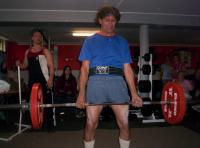 Do we need to test? Is it more measurement and monitoring rather than “testing”? This was the first discussion. My default position is Monitor rather than test. I need a good reason to test and it could be:
Do we need to test? Is it more measurement and monitoring rather than “testing”? This was the first discussion. My default position is Monitor rather than test. I need a good reason to test and it could be:
- To see if what we are doing is working.
- To measure progress.
- To evaluate the players so that we can cluster them for training.
We set off by dividing the tests into health, general and specific. Health tests include biomarkers that could be considered as monitoring or measurement. Height, weight, sleep, mood, skinfolds, heart rate, the sympathetic nervous system can all be monitored regularly with little effort, just consistency.
Some physical competency could also be included in this category. An overhead squat or single leg squat could be included in every warm-up and observed.
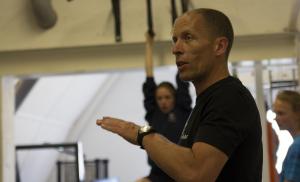 General tests would give us information about the specific fitness parameter being trained. These might include most strength tests, field endurance tests, agility and speed tests.
General tests would give us information about the specific fitness parameter being trained. These might include most strength tests, field endurance tests, agility and speed tests.
We know how good our athletes are at performing these tests.
Again, we are measuring what the athletes are doing in training, so we could conduct this in our training sessions.
Specific tests would be relevant to the sport and replicate specific actions. The tennis fan drills, countermovement jumps or medicine ball throws, the rugby union endurance test that requires down and up movements. These tests should be able to isolate one component of performance that is extremely applicable to that sport.
Agility tests that last 30 seconds, treadmill incremental VO2 max tests for Judoka, shuttle runs for 800m runners are examples of tests that either measure more than one thing, or are the wrong test for that athlete.
Measuring accurately and reliably
One of my pet hates (there are many) is watching athletes get inaccurately tested by “pseudoscientists”. Athletes want to get the best scores, so will find ways to cheat and take shortcuts. This might be stopping 2cms short of each line on the yo-yo test, or going over cones rather than around them.
To make the test reliable, strict warm-up protocols need to be observed, as does the order of testing. If you change the warm-up before each testing day or change the order of tests, then they are unreliable. The data becomes invalid.
Carrying spare batteries, masking tape, spare pens and stopwatch are essential tools for the tester.
I split the coaches into small groups and asked them to choose three tests for their sport and to deliver one of those three. They had to come up with a rationale for each of the tests, plus a protocol on preparing and delivering.
The delivery was interesting, with errors being found by each other, plus good points. What appears to be”common sense” or “obvious” is often forgotten in the maelstrom of big groups of athletes and pressure.
Lots of mistakes and errors were found: which was excellent because everyone was learning.
Everyone was open to feedback and constructive in giving it. This “critical friendship” is important for developing coaching skills.
Analysing and giving feedback
Another pet hate (I told you I had a few) is athletes being subjected to tests by pseudo-scientists who then go off with the data and use it for their “research” projects.
If an athlete has worked their nuts off in testing, the coach has allocated time aside for it, then it is imperative that the information is analysed and used.
I then looked at some of the lessons learnt from the data visualisation and infographics course I am currently doing.
Look at the difference between these two graphs:
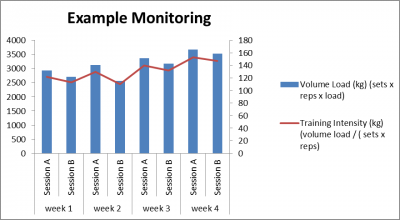
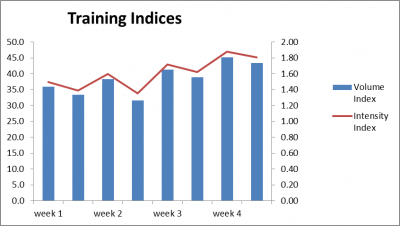
Which one is clearer? Can you see why that is?
It is quite easy to get sucked into a trap of designing graphs and charts that look pretty in 3D colour. However, as with all aspects of coaching, it is our job to make the information as clear, relevant and understandable as possible.
The workshop finished with specific lessons learnt and some ideas to help share information and data analysis.
Once again, I was delighted to see the coaches share ideas, challenge their own thinking (and mine) and come up with practical solutions to problems we all encounter.
Previous CPD workshops included “In season training” and “agility training”
If you would like to discuss fitness testing for your team then please contact James
Further reading:
How to make pre-season training interesting, relevant and more fun.

Thanks for an excellent workshop James, I particularly enjoyed the practical element. Learning through doing (and making mistakes) was a very effective tool for me!
Regarding the data visualisation, infographics are apparently the next big thing. A google image search shows some good examples. It’s something I’ll look into with a view to providing feedback to clients, something I hadn’t given much though to previously.
Alex
Thanks Alex. It was good to see you again and get your insights into how you currently test.
It is all too easy to go onto workshops, sit down and be a passive attendee. You can then walk away congratulating yourself on a “job well done”.
Unfortunately little actual learning or development takes place. That is why we do the practical element.
I have learnt loads from the last 3 cpd workshops from all of you coaches.
Thanks for running the workshop James.
I very much enjoyed how the workshop was delivered and how it got me thinking about why we fitness test, and the practical side of fitness testing. I also enjoyed how the data visualisation/presentation section challenged my thinking with regards to data visualisation/presentation.
Thanks again,
Ollie
Thanks Ollie, lets hope we can use that information to help all our athletes. Great to see everyone challenging and being challenged in order to get better.
[…] a big work capacity is essential in squash fitness, as is having leg strength, the type of fitness test is now skewing their […]
[…] More on testing here […]
[…] preparation for the fitness testing CPD workshop, I asked different coaches for their input. Here are the Q&A with […]
[…] is a place for testing basketball fitness, I prefer one of the yo-yo tests, plus vertical jump, plus our athletic […]
[…] Choose your tests carefully. If you are in a team field or court sport like Football, Hockey, Rugby or Basketball then the bleep test or yo-yo tests are relevant to the demands of the game. More so than a 1500m or 5km running (or even worse rowing) test to assess your endurance (more test detail here). […]